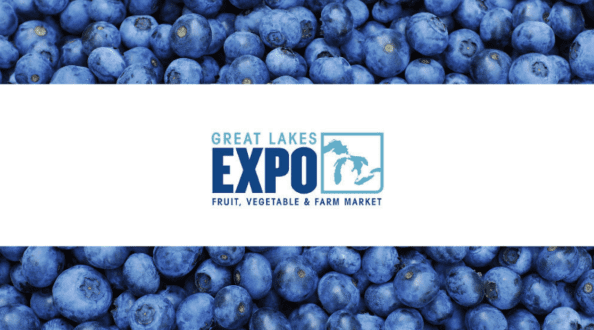

Nov 2, 2020Mulching blueberries and cherries focus of 2020 Great Lakes EXPO sessions
Despite going virtual for the first time due to COVID-19, the educational sessions and opportunities at the 2020 Great Lakes Fruit, Vegetable & Farm Market EXPO will once again provide growers with invaluable information and resources.
Bernadine Strik, a horticulture professor at Oregon State University, has been studying berry crops and blueberry production systems for over three decades — traveling all over the world to present research on blueberry growing and pruning.
In the “What difference does mulch make?” session at the EXPO, Strik will be providing over 15 years of research comparing different mulches — more specifically, how mulch can make a difference to blueberry growers.
“The most traditional row mulch, in blueberry, is generally organic mulch, sawdust or something like pine bark, for example,” Strik said. “But as we have been doing research, we’ve been seeing positive effects of what we call a weed mat … and as we’ve been comparing that to organic mulches, we will talk about the different advantages and disadvantages of each for growers.”
Strik said that not only will they be highlighting the benefits and potential drawbacks of each method, but they will also talk about the long-term effects that each may have — both on the environment and on crop yield.
“Anything we do, we need to be thinking about long-term effects,” Strik said. “That’s one advantage to having been in my position for so long — we have long-term studies and can show growers what happens after 10 years of weed mat or mulch by itself, and can document any negative impacts.”
In the Pacific Northwest, cherry growers have been faced with having to confront the “Little Cherry Disease,” or LChD. Sometimes referred to as K & S little cherry or sour cherry decline, LChD is a viral infectious disease that affects cherry trees — most notably sweet cherries or sour cherries.
In the cherry session, hosted by Scott Harper and Tobin Northfield of Washington State University, the speakers will share some of the specifics about LChD — including how it develops, how it spreads and some control measures growers can take to sample, test and manage infected trees.
And although the disease has been largely seen in the northwest and western parts of the country over the last few years, Harper said that the goal of the session is to educate those who may not yet be dealing with it, but where it could become a possible nuisance. Historically, Harper noted, it has been seen in the Midwest and eastern states — and there’s a good chance it could reemerge as a potential threat.
“While the outbreak right now is in the pacific northwest, the goal is to bring national attention to it in areas where it hasn’t yet emerged,” Harper said. “We’ve been finding and receiving part samples as far east as Montana, Utah and Colorado.”
For the first time, the 2020 Great Lakes EXPO is going virtual! Aside from the health and safety benefits, shifting the 2020 EXPO to a virtual platform also means that the educational sessions will have a wider variety of content and speakers, no limits in attendance size and easier Q&A capabilities with growers.
For information on the 2020 Great Lakes EXPO, registration and educational session details and more, visit www.glexpo.com.















